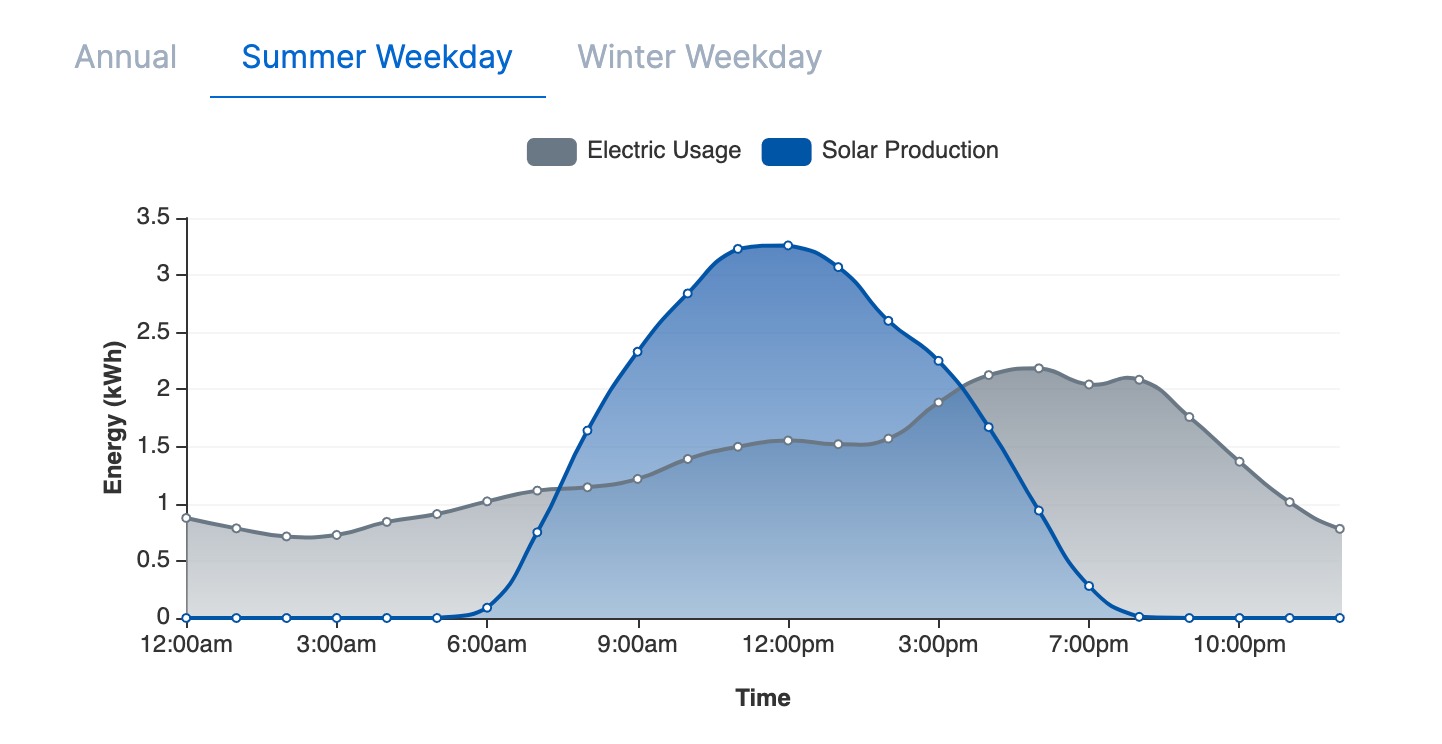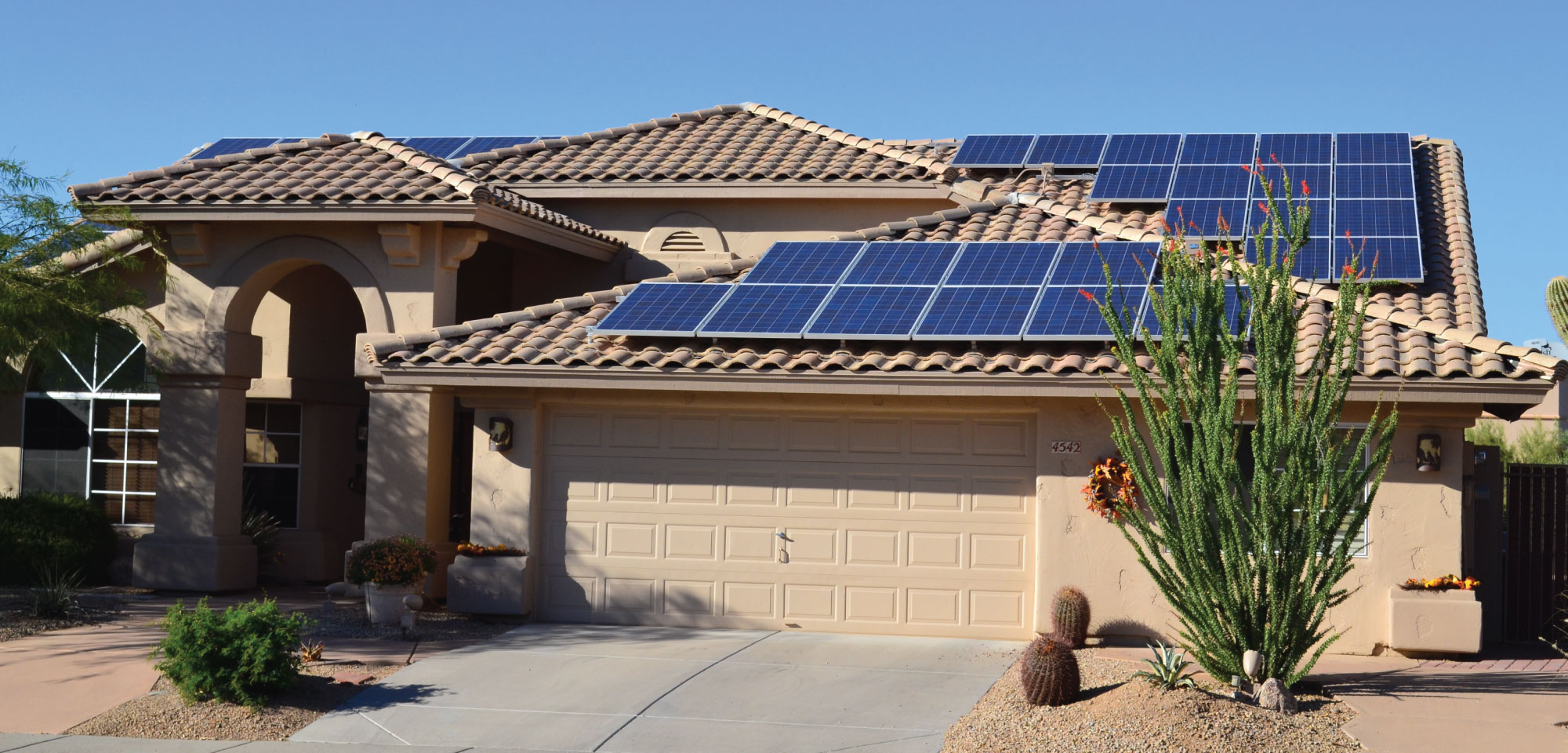Updated 3 months ago
What you need to know about Arizona’s net billing program
Written by Catherine Lane Catherine LaneCatherine has been researching and reporting on the solar industry for five years and is the Written Content Manager at SolarReviews. She leads a dyna...Learn more

Why you can trust SolarReviews
SolarReviews is the leading American website for solar panel reviews and solar panel installation companies. Our industry experts have a combined three decades of solar experience and maintain editorial independence for their reviews. No company can pay to alter the reviews or review scores shown on our site. Learn more about SolarReviews and how we make money.
Despite all the sunshine, Arizona actually doesn’t offer the most solar panels-friendly policies - specifically, net metering. Net metering is a utility rate structure where utilities pay solar homeowners the full-retail rate of electricity for the solar energy their panels produce.
Instead, Arizona requires their utilities to offer a different program called net billing - and it can be a bit confusing. With net billing, Arizona homeowners get paid at a lower rate for the solar energy they send to the grid. This ends up lowering solar savings. But, solar panels in Arizona can still pay for themselves quickly, even with the net billing program.
Key takeaways
Arizona does not offer a net metering program; utilities are required to use a net billing program instead.
Under net billing, excess solar generated by a solar panel system is credited at an excess generation credit rate, which is lower than the retail rate of electricity.
Depending on the utility, excess solar energy will be purchased at a rate between 5% and 30% lower than the retail rate of electricity.
Right now, Arizona homeowners can still get significant solar savings through net billing, but rates will reduce in the future, leading to lower savings for homeowners who wait to go solar.
Net metering vs Arizona’s net billing
Like we said earlier, Arizona does not offer net metering. Instead, the state’s investor-owned utilities are required to offer a different compensation rate structure called ‘net billing’. Net billing provides homeowners with lower solar savings, as excess electricity is not credited at the full-retail rate of electricity (or in other words, its retail value).
With net metering, you get the full-retail rate of electricity for all of the excess solar energy you send to the grid. That means if your panels produce 10 kilowatt-hours (kWh) of solar electricity, but your home only uses 8 kWh, your utility will pay you full price for those extra 2 kWh you didn’t use.
You can watch this video of solar expert Will White to get a better understanding of what net metering is and how it works:
How does Arizona’s net billing program work?
Net billing is similar to net metering in that your home uses the solar energy your panels produce, and any excess solar electricity is sent to the grid and purchased by your utility. Where net billing differs from net metering is in how much the utility has to pay you for that excess solar energy.
Under Arizona's net billing program, utilities purchase excess solar at an “excess generation credit rate” that is worth less than the retail value of electricity. So, if your utility charges you $0.10 per kWh you use, they might only pay you $0.08 per kWh of solar you send to the grid.
And don’t expect your utility to cut you a check for the excess electricity you send them. Instead, you'll get paid back through a credit on your electricity bill that can be used to offset a portion of your future electricity costs.
Excess generation credit rates
The excess generation credit rate varies between utilities, but no matter what utility you have, it will be lower than the full-retail rate of electricity. Arizona Public Service (APS), for example, values excess solar energy at about 60% of what they charge homeowners for electricity.
The following table outlines the excess generation rate for the three major utilities in Arizona in 2023:
Utility | Excess generation credit rate | Estimated retail rate* |
|---|---|---|
Arizona Public Service (APS) | $0.09 per kWh | $0.12 per kWh |
Tucson Electric Power | $0.08 per kWh | $0.15 per kWh |
UNS Electric | $0.08 per kWh | $0.11 per kWh |
*Actual retail rates will vary depending on the rate plan you chose. Certain utilities require solar customers to use specific rate plans.
The good news is, while the excess generation credit rate is updated annually, it cannot decrease by more than 10% per year. Luckily, you will be locked into the same excess generation rate for 10 years, so you don’t have to worry about the value of your rate decreasing after you install your panels.
Instantaneous netting
Another key thing to note about Arizona’s net billing program is how often credits are netted.
The net billing program uses what’s called “instantaneous netting”, which means the utility will tally up how much electricity you produced in a short interval, like one hour, and compare it to how much electricity you consumed in that hour. Any excess solar energy produced during that interval will be credited at the excess generation rate.
You can apply those excess generation credits you get to the energy you take from the grid later, but it just won’t cover all of the costs.
Usually, you’ll see credits getting netted on a monthly or yearly basis. With monthly netting, the utility will figure out how much electricity you used versus how much you produced over the course of a whole month. This means extra solar energy you produced on Monday afternoon could cover the total cost of electricity you took from the grid on Thursday night. If you had any leftover solar credits at the end of the month, that’s when you would be credited at the excess generation rate.
Instantaneous netting is going to decrease the amount you can save with solar, because the net billing credits can’t even be used to completely cover the costs of electric usage later in the same day, let alone late in the week or month.
Solar savings with Arizona net billing
If you’re finding yourself saying, “I still don’t know what any of that means”, we don’t blame you - the net billing program is confusing. Let’s take a look at an example.

Let’s say you install a solar panel system in Prescott, Arizona that was designed to cover most of your $130 electric bill. On a sunny summer day, the system produces about 28 kWh of electricity between 6 AM and 7 PM.
Because of the instantaneous net billing, only about 18 kWh of solar produced will fully offset the electricity you used throughout the day. The remaining 10 kWh you produced will be credited to your account at the lower excess generation rate.
In this scenario, your monthly electricity bill would go down from about $130 per month to $23.00, based on the current rates offered by APS. This is still a substantial amount of savings - about $100 per month. But, if Arizona had full-retail net metering, you would be saving more like $120 per month.
Will a solar battery help you save more with Arizona’s net billing?
Yes, pairing your solar panels with a solar battery will give you some extra savings on your electric bill with net billing.
You see, instead of sending your excess solar energy to the utility and getting credited at the excess generation rate, you would send the energy to your battery. Then, when your solar panels aren’t producing enough electricity to cover your energy consumption, you would take energy from the battery instead of the grid. This would essentially make it so you get the full-retail value out of each kWh of solar energy you produce.
However, solar batteries are a substantial expense, adding a minimum of $10,000 to your solar installation. Tacking that much onto your solar installation costs just for an extra $10 in savings a month isn’t worth it in our opinion.
Are solar panels worth it in Arizona?
Despite the fact that net billing doesn’t let homeowners save as much as net metering does, solar is still a worthwhile investment in Arizona. Right now, net billing rates are somewhat close to the retail rate of electricity, so the savings are still great.
Using the system in the earlier example, you would save somewhere around $19,000 over the 25-year lifetime of the system. The installation itself would only cost about $10,00 after the 30% federal solar tax credit, and would drop down to $9,100 after Arizona’s state solar tax credit. Basically, you’ll save way more with a solar system than you’ll spend on installing it. In fact, most solar systems will pay for themselves in under 10 years.
Keep in mind, however, Arizona’s utilities make their excess generation credit rate lower yearly. If you want to maximize your solar savings, you should make the switch sooner rather than later, because next year, those savings will be lower. Get started on your solar installation today by using our solar panel calculator.
Catherine has been researching and reporting on the solar industry for five years and is the Written Content Manager at SolarReviews. She leads a dynamic team in producing informative and engaging content on residential solar to help homeowners make informed decisions about investing in solar panels. Catherine’s expertise has garnered attention from leading industry publications, with her work being featured in Solar Today Magazine and Solar ...
Learn more about Catherine Lane